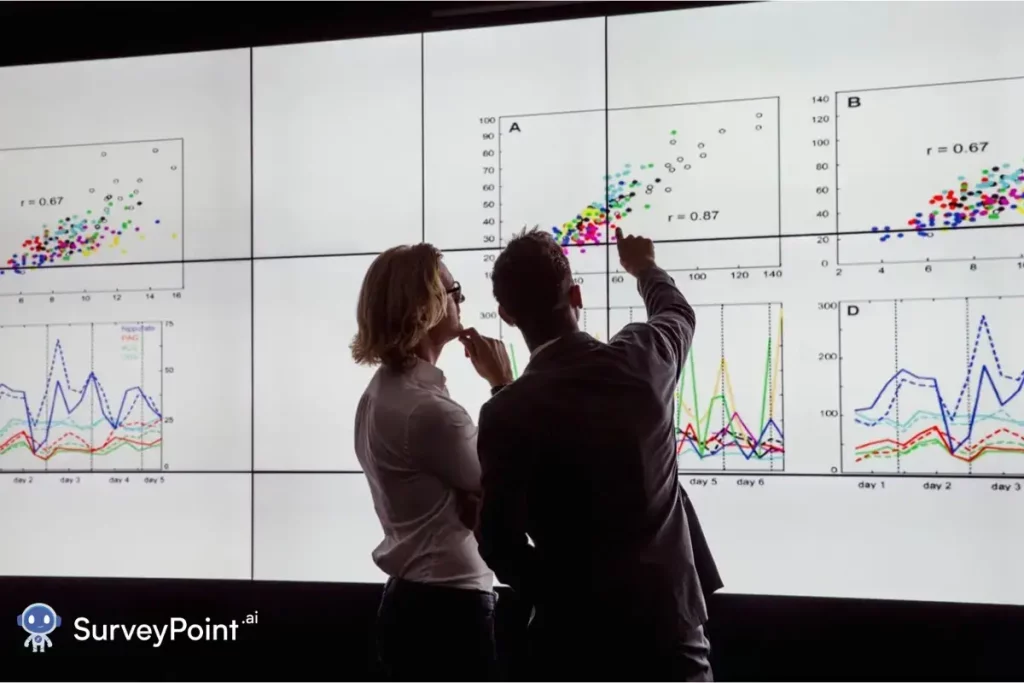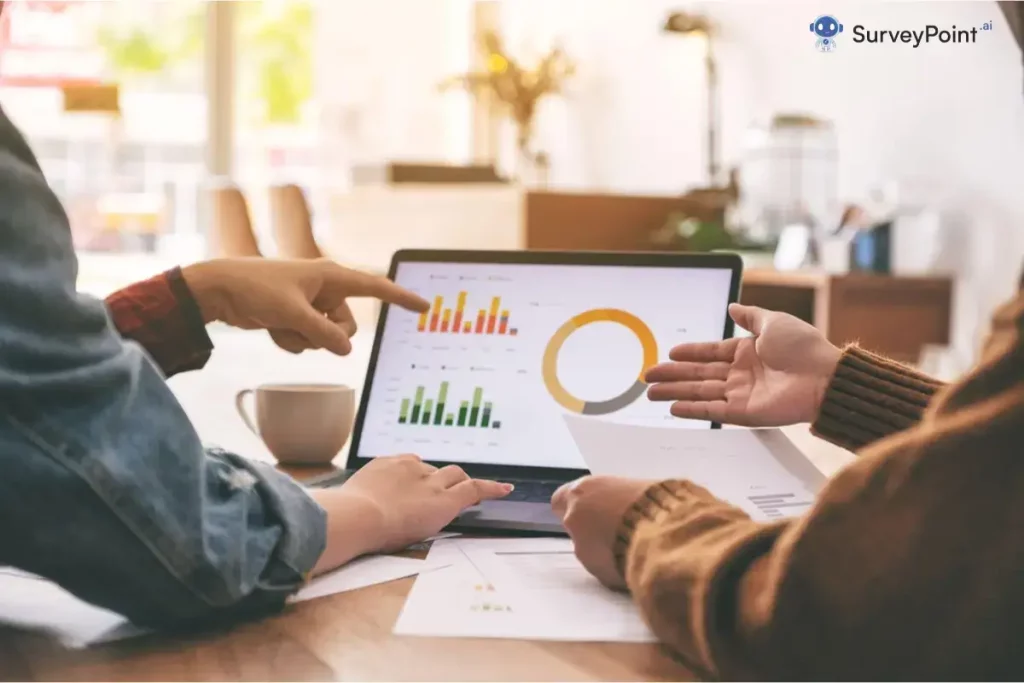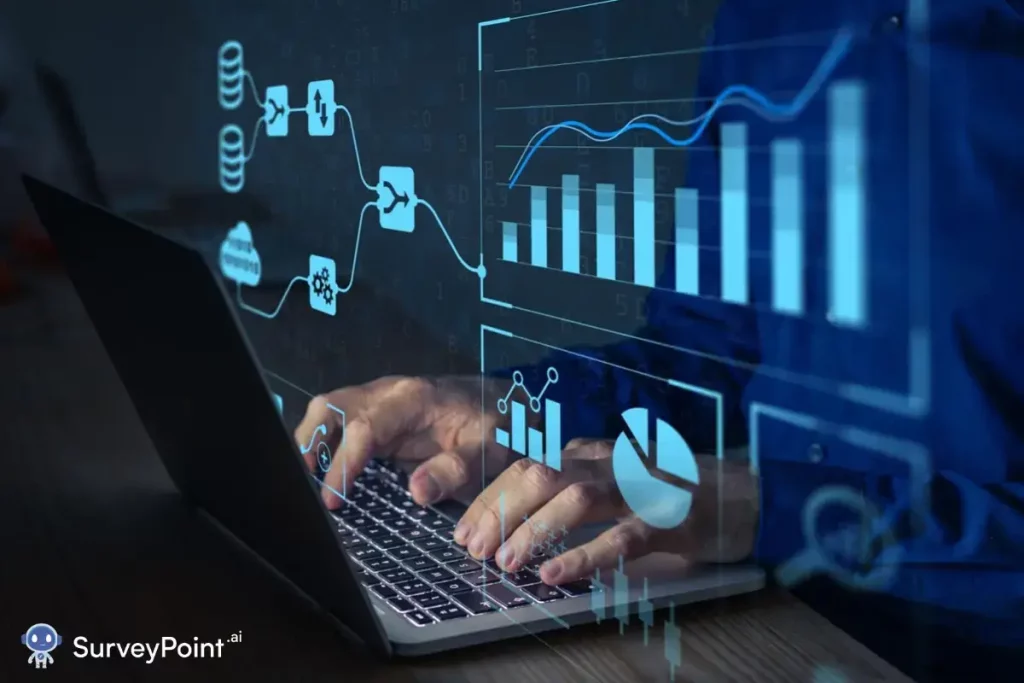
Dive into the world of nonprofit data analytics with our insightful blog. Uncover the power of data-driven decision-making for nonprofits, exploring key strategies and tools. From understanding donor behavior to optimizing outreach efforts, our blog delves into the transformative impact of nonprofit data analytics.
Stay informed and empowered as we navigate the intersection of data and social impact. Unlock the potential of your organization with our expert insights. Explore the realm of possibilities at the forefront of “Nonprofit Data Analytics.
The nonprofit sector plays a crucial role in society by fulfilling social missions. However, fierce competition arises as more NGOs tackle the same causes. Limited funding makes determining where to allocate resources vital. This heightens the need for nonprofits to maximize effectiveness through strategy.
Data analysis provides insights for data-driven decision-making. Per a Stanford University study, high-performing nonprofits are twice as likely to incorporate analytics across key functions. However, underutilization persists industry-wide currently:
90% of nonprofits gather data
Only 5% leverage it for daily decisions
This represents a lost opportunity for enhancing outcomes.
The Potential of Nonprofit Data Analytics
Data analytics strengthens NGOs by enabling:
- Understanding donors through their preferences and behaviors
- Improving fundraising campaign efficiency through response measurement
- Presenting findings to leadership for decisions on goals and strategy
- Tracking progress toward mission accountability
In essence, it is about gaining actionable intelligence on:
- External communities
- Internal operations
- Overall performance
Barriers to Data Analysis Adoption
Despite potential benefits, barriers like the following limit nonprofit analytics adoption:
| Barrier | Details |
| Resource Constraints | Budget, staffing and tools |
| Data Capabilities | Collecting, processing, managing data |
| Analytical Literacy | Lacking experience with techniques |
| Technical Expertise | Platforms and visualization |
| Leadership Commitment | Obtaining buy-in and investment |
Overcoming these requires both cultural shifts and focused capacity building.
The key is taking an incremental data-oriented approach, starting with basic descriptive statistics to deliver tangible value. Once leadership recognizes benefits, it spurs further commitment in a self-reinforcing cycle.
Nonprofits must elevate competencies in leveraging data for decision-making to remain competitive. The tactics and frameworks are now accessible. It comes down to embracing analytics as an accelerator toward shared goals for community impact.
Understanding Donors With Data

Nonprofits depend on volunteers and donors to fuel their mission. Better understanding these supporters enables more meaningful engagement and long-term partnerships.
Data analytics provides a framework to intimately understand audience interests, motivations and behaviors for tailoring supporter relations.
Gaining Insight on Donors
Several data dimensions reveal insights on donors:
- Demographics – Age, location, profession
- Psychographics – Values, motivations, interests
- Giving history – Frequency, preferred channels, loyalty
- External references – Brands, content interests, influencers
Data collection may include:
- Surveys and interviews
- Focus groups
- Digital analytics on interactions
- Appended third-party data
Cross-analysis exposes patterns for segmentation and personalization.
Typical Donor Personas: Nonprofit Data Analytics
While each supporter is unique, common donor personas emerge, including:
The Budget-Conscious Philanthropist
- Passionate about mission
- Gives smaller recurring gifts
- Values keeping nonprofits lean
The Next-Generation Tech-Savvy Giver
- Proficient on social media
- Reacts to multimedia content
- Uses mobile apps for transactions
The Busy Suburban Family Volunteer :
- Juggles kids and careers
- Contributes time over money
- Looks for family activities
Recognizing distinctions allows customized experiences.
Strategic Donor Relationships

Data-driven donor understanding facilitates:
- Retaining supporters through relevance
- Reactivating inactive members through outreach tuning
- Upgrading donors via engagement preferences
- Acquiring new contributors through targeted digital advertising
This leads to expanding lifetime value.
Ongoing analysis continues fueling insight. Consistently incorporate analytics into knowing your nonprofit’s loyal support community.
Measuring Incremental Outcomes
What gets measured gets improved. That maxim holds true for tracking outcomes in the social sector. Nonprofits often focus narrowly on overall goals rather than measuring interim impact steps. By overlooking intermediate metrics, opportunities for continuous enhancement are missed.
The key is rigorously monitoring incremental metrics showing progress towards larger goals to optimize programs and operations.
Aligning Measurement Framework to Objectives
To effectively gauge performance, nonprofit measurement strategies should include:
- Goals tied directly to formal theories of change
- Activity inputs like resources invested
- Outputs produced from activities
- Outcomes showing social change impacted
For example, an adult literacy program may track:
- Hours of instruction (Input)
- Students attending (Output)
- Reading skills gained (Outcome)
- Employment metrics (Goal)
Tight alignment ensures meaningful measurement at each level.
Tracking Milestones Over Time

Measurement should examine progress longitudinally through leading and lagging indicators like:
- Short-term metrics – Initial reactions, learning
- Mid-term metrics – Application, behavior change
- Long-term metrics – Social impact against goals
Regular measurement spotlights what interventions and staff activities work. It also builds an evidence base for communicating impact to stakeholders.
Presenting Results
Effective presentation of findings relies on the following:
- User-friendly dashboards visualizing key metrics
- Dynamic filtering to spotlight insights
- Data transparency for credibility
- Clear summaries and calls-to-action driving decisions
Measurement without follow-up analysis and presentation fails to deliver value. Use measurement findings proactively through regimented performance reviews.
The path to large-scale, lasting impact runs through incremental steps. Ensure measurement keeps your nonprofit marching steadily forward, using data to guide adjustments towards the ultimate destination.
Analyzing Results for Insights
Once data has been collected from nonprofit programs and campaigns, the next critical step is analyzing the results to gain meaningful insights. As a nonprofit data analyst, your role is to take raw metrics and statistics and transform them into actionable conclusions that will help guide decisions.
There are several key analysis techniques you should leverage:
Descriptive Statistics
Start by calculating descriptive statistics like means, medians, ranges, percentages, etc. These quantify overall trends and distributions in your data sets. Useful descriptive stats include:
- Campaign response rates
- Average donation amounts
- Member renewal rates over time
- Demographic makeup of supporters
Finding Patterns
Look beyond surface-level stats to uncover patterns and connections in your nonprofit’s data. Correlation analysis and segmentation by factors like geography and channel can reveal variations in metrics and outcomes.
| Channel | Click-Through Rate | Conversion Rate |
| 15% | 5% | |
| Social Media | 8% | 3% |
| Website | 10% | 4% |
For example, the table above shows response rates differing by channel. These kinds of insights allow better resource allocation.
Conclusions and Recommendations
The most vital final step is outlining the key takeaways, conclusions, and next steps your analysis supports. Demonstrate exactly how the numbers justify future nonprofit strategies and goals.
- “Response rates were 30% higher among recently acquired supporters under age 40, so we should prioritize engaging this segment.”
- “Just 10% of one-time donors renewed their support this year compared to 60% of sustaining givers, showing a need for retention efforts.”
Powerful, targeted recommendations lead to smarter data-driven decisions and greater mission accountability. Advanced analysis transforms metrics into mission impact.
Presenting Findings
Once you’ve analyzed Nonprofit Data Analytics and drawn insights, the next step is presenting those findings to stakeholders in a clear, compelling way. Effective data visualization and reporting ensures your work transforms into real-world improvements.
There are three key aspects of communicating data analysis:
Dashboards
Dashboards provide at-a-glance views of key metrics and KPIs. A single visual can synthesize volumes of data into useful insights. Great dashboards include:
- Campaign response dashboard showing engagement over time
- Donor retention dashboard with churn predictors
- Fundraising dashboard displaying dollars raised
Dashboards make data accessible and easy to digest for leadership teams, highlighting progress towards goals.
Nonprofit Data Analytics :Reporting
More detailed static and dynamic reporting presents fuller analysis for tactical application. Include visualizations along with interpretive commentary focused on decisions and strategies. Reporting elements like:
- Changes in donor acquisition costs over campaigns
- Segmentation of supporters by lifetime value
- Forecasting of end-of-year contribution pipeline
Storytelling: Nonprofit Data Analytics
Supplement presentation of data and findings with compelling anecdotes and stories showing real-world impact. This connects numbers with human experiences to inspire supporters and stakeholders. Storytelling brings data to life.
- Profile a donor who gave their largest gift after a stewardship effort
- Feature a family assisted through expanded services from an optimized program area
Powerful presentation of Nonprofit Data Analytics provides both insightful overviews and actionable details – coupled with engaging narratives that donate the mission’s humanity. This drives understanding, buy-in and activism.
You Must Read 7 Key Differences in Analytics vs. Data Analysis: Unlocking the Power of Analytics 7 Incredible Tips for Mastering Azure Data Factory Design Patterns: Unlocking Success Get Hired Fast: Essential Data Analyst Skills You Can’t Ignore in 2024
Fundraising Optimization
For most nonprofits, fundraising performance is critical to achieving impact. Applying data analysis to optimize appeals, campaigns, and outreach is key to maximizing donor contribution revenue.
There are three core approaches to improving fundraising through data:
Campaign Measurement: Nonprofit Data Analytics
Analyze past fundraising initiatives to understand what worked well – and what didn’t. Metrics like:
- Total dollars raised
- Cost per dollar raised
- Number of new donors
- Average gift size
Offer insights into refining future efforts. Use statistical modelling to identity your best-performing segments and channels.
Donor Segmentation
Divide supporters into clusters based on key attributes like loyalty, capacity, channel preference, etc. Appeal messaging and asks can then be tailored for each segment:
| Segment | Profile | Ask Strategy |
| First-Time Donors | Small gift, high risk of lapsing | Stewardship communication, renew ask |
| Mid-Level Monthly Givers | Reliable sustaining revenue | Upgrade ask via mail appeal |
| Major Donors | Large gifts tied to Galas | One-on-one ask focused on naming opportunities |
Marketing Approaches
Apply marketing methodology to optimize all elements of fundraising outreach – creative, message, offer, channel mix, etc. Use A/B testing and experimentation to continually improve.
Sent heartfelt mission-focused appeal to Group A
Sent matching gift offer appeal to Group B
Group B had a 15% higher conversion rateFollow-up then scales the better performer. This constant optimization thinking compounded over time leads to major gains.
Taken together, savvy application of measurement, segmentation, and marketing allow nonprofits to squeeze more dollars out of every constituent touch. Tiny improvements add up to huge impacts on fundraising ROI and dollars available to fuel programs. The result? Greater progress towards realizing the mission.
Improving Donor Retention: Nonprofit Data Analytics

Acquiring new donors is only half the battle – nonprofits must also focus intently on retaining existing supporters. Losing donors means losing revenue to fund programs. Nonprofit Data Analytics enables smarter loyalty and retention efforts.
There are three key retention techniques that rely on data:
Reducing Churn: Nonprofit Data Analytics
Analyze your nonprofit’s donor churn rate over time, segmenting by loyalty level. Identify leading indicators of lapsing to predict which supporters are at highest risk.
First-time donors have a 55% churn rate
Monthly recurring donors have a 15% churn rateExecute targeted re-engagement campaigns for recent lapsers and at-risk groups to win back donors before they disengage completely. This reduces long-term churn.
Reactivating Supporters
Segment dormant constituent records based on prior giving activity. Older, higher-value lapsed donors warrant higher-touch efforts like phone outreach or even one-on-one meetings. For more recent or lower-value donors, personalized email campaigns focused on renewing engagement are likely the best channel.
- Install monthly or quarterly lapsation workflows to systematically attempt to reactivate disengaged supporter segments
Upgrade Opportunities: Nonprofit Data Analytics
Analyze one-time gift patterns and attribute profiles to build models predicting a supporter’s propensity to become a recurring sustaining member. Use this scoring to guide upgrades asks via tailored messaging that resonates based on interests and behavior.
The key is applying data-driven segmentation, communication workflows, and modeling to retain and upgrade donors – boosting long-term relationship fundraising to increase renewals and upgrades. This builds stability and lets nonprofits dedicate more resources to executing their mission.
Forecasting Trends and Performance
As a nonprofit data analyst, part of your role involves not just reporting on past metrics, but also forecasting future outcomes. Developing reliable models to predict trends empowers smarter planning and emergency allocation.
There are a few core approaches to forecasts:
Modeling Future Outcomes: Nonprofit Data Analytics
Leverage time series analysis and regression modeling to spot patterns and correlate influencing factors with key performance indicators. These models predict likely scenarios based on projections of variables like:
- Website traffic growth
- Member renewal rate
- Major giving pipeline conversion
Build models with sufficient history to properly fit and test before using them to forecast trends and metrics.
Planning Strategies
Apply data-driven projections to inform resource planning and scenario modeling. For example, combine program capacity forecasts with projected demand based on member projections to plan optimal hiring and expansion strategies. Report confidence interval bands in forecasts to aid planning.
Predictive Analytics
Machine learning algorithms can process many complex variables unavailable to traditional analysis. These detect subtle predictors human analysts might miss.
Random forest model achieves 72% accuracy predicting major gift conversion
Deep learning LSTM model forecasts next month's donor churn with 80% precisionThe most sophisticated nonprofits are investing in advanced analytics to power true predictive insights and planning.
Getting fundraising, expenses, and program KPI forecasting right provides enormous value. More accurate revenue projections mean better budgeting and risk mitigation, while projected program demand facilitates everything from staffing cycles to inventory orders. Forecasting unlocks strategic resource allocation for the future.
Expanding Supporter Engagement
Nonprofits live and die by their ability to engage supporters. Applying data analysis to optimize communications, experiences, and outreach is pivotal for increasing retains, building loyalty and ultimately driving more impact.
There are three primary ways data guides supporter engagement expansion:
Personalized Communication
Segment constituent records based on attributes and activity gleaned through analytics. Develop predictive models to customize messaging to specific groups based on unique motivators and channel affinities.
High net worth major donors receive stewardship print newsletters
First-time millenial donors get social media re-targeting adsThis tailored outreach resonates more, driving response.
Omnichannel Outreach
Coordinate supporter contacts across channels like email, direct mail, phone, events etc, documenting activity in a central CRM and integrating insights across sources. Map supporter journeys to identify the optimal cross-channel cultivation paths per segment.
- Send follow-up email after gala invitation
- Invite most engaged social followers to special event
This expanded reach increases share-of-voice.
User Experiences
Apply web, social and email analytics to optimize UX. Conduct A/B testing of calls-to-action, layouts, content etc. Fix points of friction. Build supporter self-service portals with role-based dashboard views.
The result: more conversion and deeper engagement everywhere supporters interact with your nonprofit online.
Getting supporter engagement right means more donations, elevated loyalty, stronger advocacy and ultimately more mission impact. Data-centric omnichannel orchestration + personalized experiences are key.
Achieving Mission Accountability
Nonprofits exist to drive social impact – not just raise money. As such, demonstrating efficient and effective use of donor funds to create change is imperative. Sophisticated data analysis plays a crucial role in quantifying outcomes and proving nonprofit accountability.
There are three pillars of mission accountability reporting fueled by data:
Proving Impact
Leverage program metrics and supporter survey data to showcase tangible examples of lives helped and progress driven by donations. Common impact KPIs include:
- Clients served via key programs
- Outcomes achieved per initiative
- Testimonials from those aided
Compelling stories and quantified indicators of real-world change build confidence in fiscal responsibility.
Reporting Outcomes
Expand beyond dollars raised to track and communicate program outputs enabled by donor support – the concrete fruits of expenditures. Demonstrate evolution towards goals over time.
Jan: 200 youth reached
Feb: 230 youth reached
YTD 2023: 430 youth reached (Goal = 500)Meeting Strategic Goals
Set specific long-term sustainability, efficiency and impact milestones aligned to mission. Rigorously measure progress towards multi-year strategic objectives.
- Reduce curriculum development costs 25% by 2025
- Double clients served within current regions by 2027
This proves the organization has a thoughtful roadmap backed by donors to create change.
Nonprofits build trust and loyalty by quantifying impact, demonstrating outcomes, and reporting on goals rooted in an altruistic mission.
This leads supporters to renew and give more over the long term – enabling greater programmatic returns. Advanced data analysis is instrumental for maximizing both donations and mission accountability.

